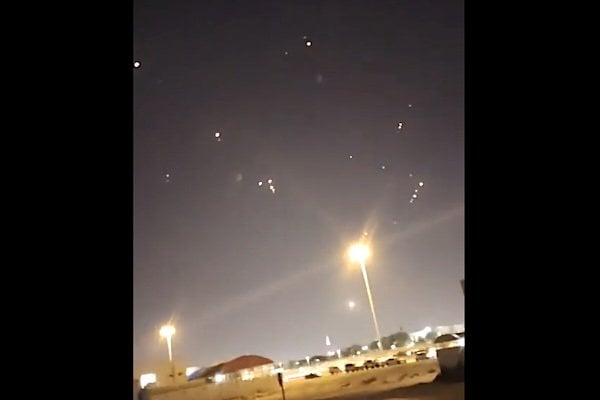The Iranian regime is facing an unprecedented crisis – like three guillotine blades suspended above its head, each poised to fall at any moment.
Blade one: Israel
The first blade is the threat posed by Israel. Should the regime resume aggressive uranium enrichment or covert efforts toward building a nuclear weapon, a military response from Israel is almost inevitable – especially given Tel Aviv’s deep intelligence infiltration at the highest levels of Iran’s leadership. From sabotage of nuclear facilities to targeted assassinations and open threats of military action, Israel has shown clear readiness. The Trump-era doctrine that “Iran must never acquire a nuclear weapon” continues to influence U.S. policy, reinforcing Israel’s position.
Blade two: The snapback mechanism
The second blade is the potential reimposition of U.N. sanctions. If Iran fails to reach a deal with Europe by October, the snapback mechanism may be triggered – automatically reinstating all previous U.N. Security Council sanctions.
Blade Three: Economic collapse
The third blade is the regime’s collapsing economy. With chronic inflation around 40%, over 80% of the population living below the poverty line and livelihoods in crisis, Iran is a powder keg. If either of the two previous scenarios – an Israeli strike or renewed U.N. sanctions – comes to pass, the result could be an economic explosion. Macroeconomic indicators would crash: Inflation, currency devaluation, widespread poverty and social unrest could rapidly trigger mass protests and street uprisings.
Why is the regime so passive in the face of these existential threats?
Supreme Leader Ali Khamenei, who holds absolute authority over all state affairs, is now conspicuously absent – reportedly retreating to an underground bunker in fear of further bombings. Other high-ranking officials have gone into hiding. No major meetings are taking place. This paralysis at the top reflects a broader system-wide inertia.
Khamenei’s strategic deadlock
Khamenei is trapped. He can neither continue with the regime’s nuclear ambitions nor retreat. Admitting failure in a nuclear project that has impoverished millions would signal the beginning of the end for the repressive apparatus. Meanwhile, the regime is so deeply corrupt and structurally hollow that even if it desired reform, it lacks the capacity to implement it.
The ‘No war, no peace’ limbo
This ambiguous state – neither war nor peace – also helps explain the regime’s inaction. It has become a tactical buffer, stalling the full activation of the Resistance Units linked to the opposition group Mojahedin-e-Khalq (MEK), even as the hated regime itself grows weaker with each passing day.
The regime’s survival playbook
Amid this deadlock, three factions are proposing strategies to rescue the regime:
Reformists – Figures like Mir-Hossein Mousavi, under house arrest for over 30 years, have called for a referendum and constitutional reform. But they overlook a critical truth: Even the smallest reform requires a degree of freedom – and even limited freedom would unravel the regime’s rotten core.
Economic experts – A group of 180 economists and academics recently issued a public call for “reform of the ruling paradigm.” For a regime like this, such a demand is tantamount to suicide.
Hardliners – The IRGC-affiliated Fars News Agency openly praised the 1988 mass executions of political prisoners as a “successful experience” and has called for a repeat to suppress today’s opposition.
Endgame
Diplomats like Abbas Araghchi continue to parrot outdated slogans about Iran’s “right to enrich uranium” – failing to grasp that the regime now faces a binary choice: survival or collapse.
It can retreat, perhaps gain some sanctions relief, and temporarily stabilize the economy.
Or it can dig in – and accelerate its downfall.
But for a regime built on repression, any retreat marks the start of the end. The Iranian people, having lost faith in the regime’s crumbling foundations, are turning to the Resistance.
Thousands of MEK-affiliated Resistance Units, the regime’s sworn enemy, are ready to channel public anger into a force for overthrowing the dictatorship.
Only one question remains: Which of the three guillotine blades will fall first?
History will decide – and the streets will not wait
No regime chanting “Neither East nor West” has ever ended up this dependent on Russia, China and criminal trafficking networks. No regime shouting “No war, no surrender” has ever stood so close to both war and surrender.
And yet, the true threat to the regime today is not the snapback mechanism, nor Israel’s jets, nor even the state’s empty treasury. The real danger lies in the Resistance – advancing the Iranian people’s vision of a secular, pluralistic republic free from tyrannical religious rule.
The Iranian people are alert. They are waiting for the next spark – just as in 2022. When it ignites, the regime will be called to account:
* For the massacre of 30,000 political prisoners in 1988,
* For sending tens of thousands of children to clear landmines in the Iran-Iraq War,
* For the deaths of millions across the region,
* For the mass emigration of the nation’s best and brightest,
* For the destruction of Iran’s rich culture at the hands of clerics who cloaked savagery in the name of Islam.
Above all, the regime will be held accountable by a nation that has neither forgotten nor forgiven what it has suffered at the mullahs’ hands and is more prepared than ever to go the distance to bring about real change.
Click this link for the original source of this article.
Author: Hamid Enayat
This content is courtesy of, and owned and copyrighted by, https://www.wnd.com and its author. This content is made available by use of the public RSS feed offered by the host site and is used for educational purposes only. If you are the author or represent the host site and would like this content removed now and in the future, please contact USSANews.com using the email address in the Contact page found in the website menu.








